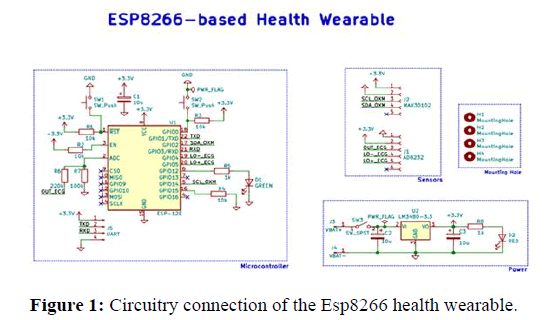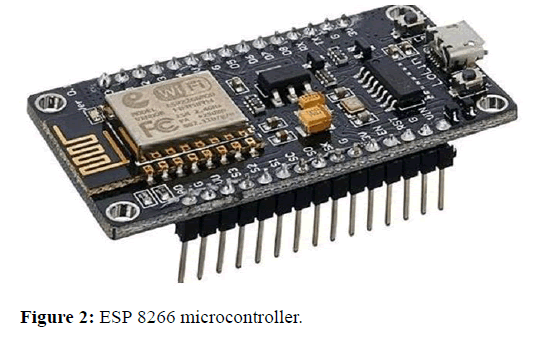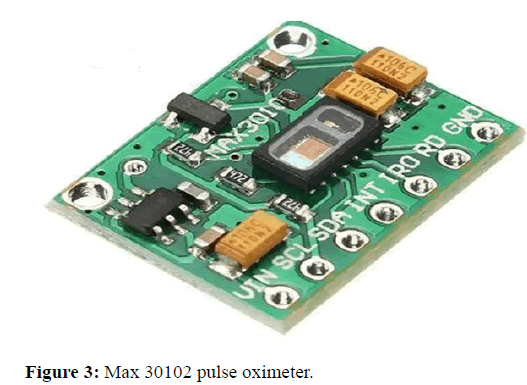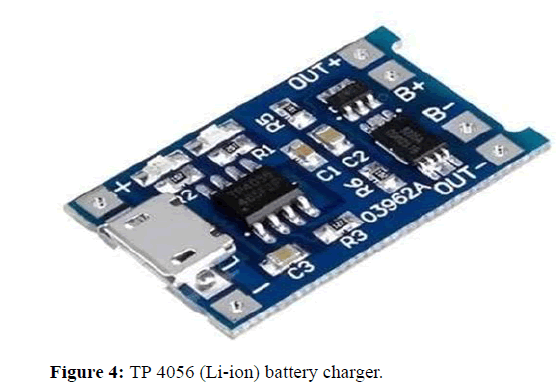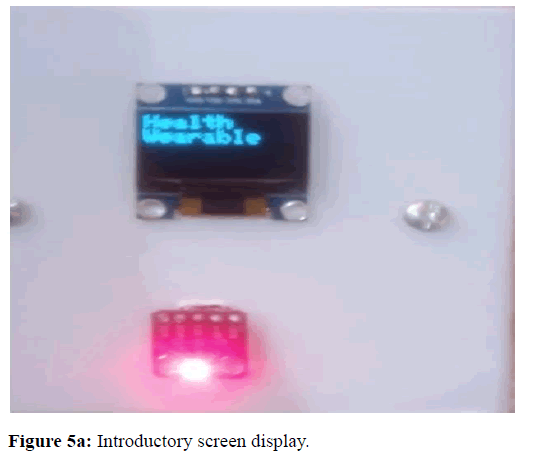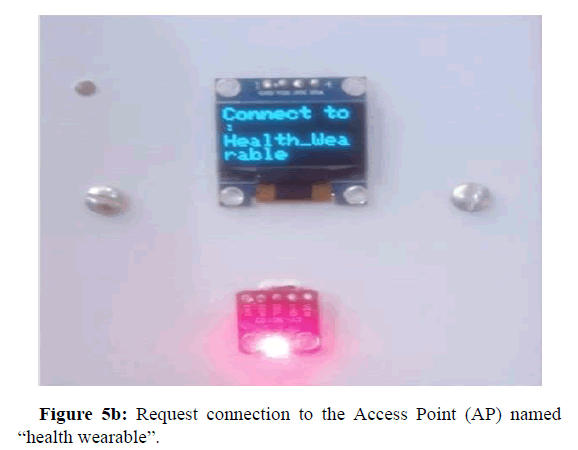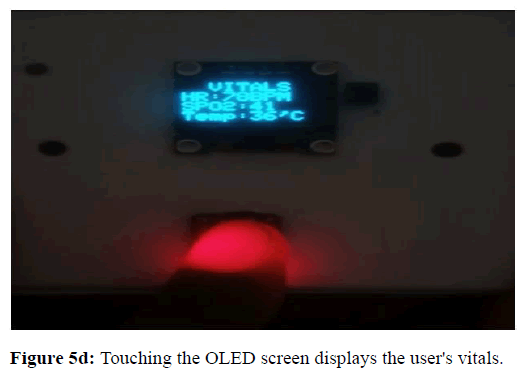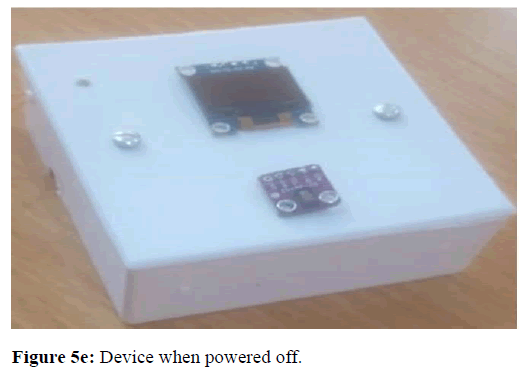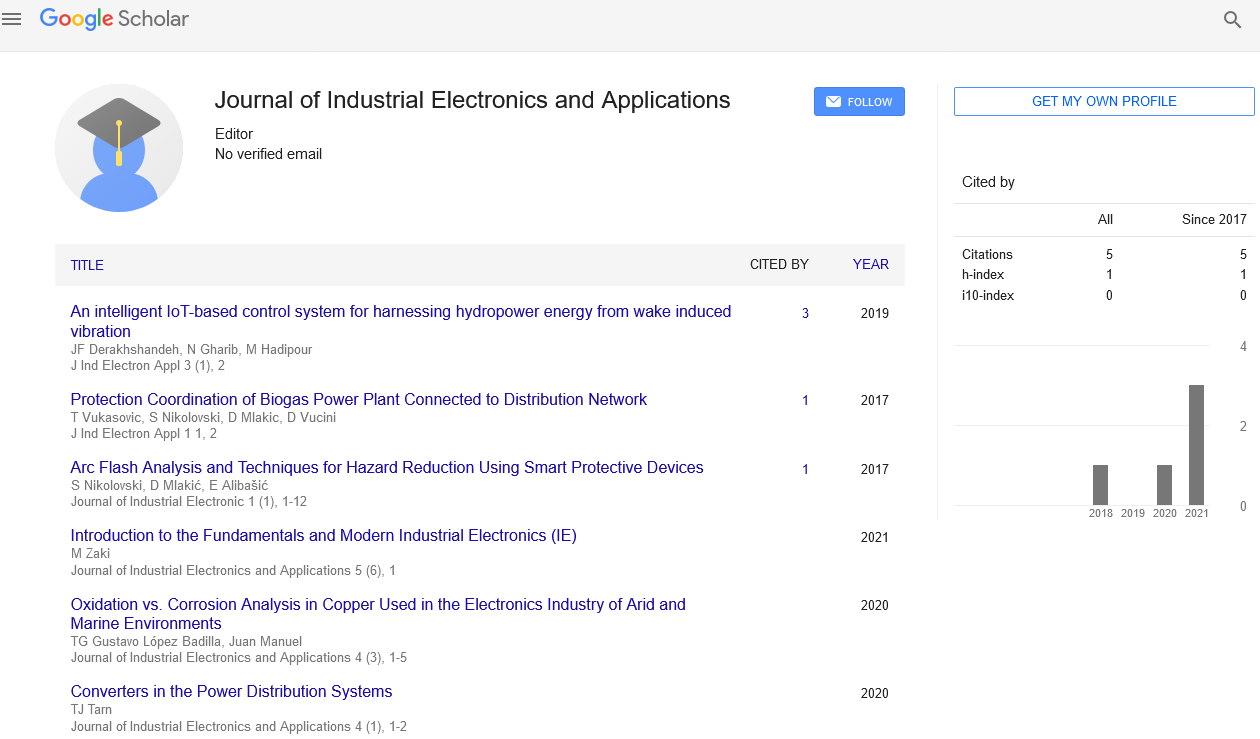Review Article, J Ind Electron Appl Vol: 7 Issue: 2
Development of Cardiac Monitoring Device Using Android Mobile Phone
Babalola AD1*, Akingbade KF2 and Ubochi BC2
1Department of Computer Engineering, Federal Polytechnic, Ile-Oluji, Nigeria
2Department of Electrical Electronic Engineering, Federal University of Technology, Akure, Nigeria
*Corresponding Author: Babalola AD
Department of Computer Engineering, Federal
Polytechnic, Ile-Oluji, Nigeria;
E-mail: abababalola@fedpolel.edu.ng
Received date: 20 January, 2023, Manuscript No. JIEA-23-87496;
Editor assigned date: 23 January, 2023, PreQC No. JIEA-23-87496 (PQ);
Reviewed date: 06 February, 2023, QC No. JIEA-23-87496;
Revised date: 20 April, 2023, Manuscript No. JIEA-23-87496 (R);
Published date: 27 April, 2023, DOI: 10.4172/JIEA.1000026
Citation: Babalola AD, Akingbade KF, Ubochi BC (2023) Development of Cardiac Monitoring Device Using Android Mobile Phone. J Ind Electron Appl 7:2.
Abstract
Cardiac monitoring devices can assist doctors and patients in tracking a patient's cardiac health over time. They can also detect irregularities in heart rhythms that may indicate a heart condition such as Atrial Fibrillation (AF). The cardiac monitor's hardware is straightforward and simple. The device's main controller, along with the max 30102 pulse oximeter, is the ESP8266 microcontroller. The Arduino IDE is used to programme it. The Wi-Fi module transmits data wirelessly from the phone to the microcontroller and vice versa. After installing the android mobile phone app, the device can wirelessly connect to the mobile phone's Wi-Fi, and the user can see his heartbeat, body temperature, and blood oxygen levels on the device's OLED screen. Additionally, vitals data can be saved in the user's cell phone for later analysis or sent to the cloud for further analysis by the doctor. The Esp8266 microcontroller controls the phone's functions and displays the device's vitals data on the phone's screen. Following the transmission of cardiac device data to the phone, the app calculates the heart beat time and sends the result to the phone screen, which is displayed on the devices OLED
Keywords: Heart rate; Rhythm; Atrial fibrillation; Pulse oximeter; Wrist band
Introduction
It stands to reason that as our world becomes more and more reliant on technology, the number of cardiac monitoring devices will rise in tandem with it. Devices that monitor vital signs like a person's heart rate or blood pressure in real time are gaining popularity and are becoming easier to obtain [1]. These instruments aid in the diagnosis, treatment, and management of a wide range of diseases and disorders, including cardiovascular illness and high blood pressure. But the majority of existing monitors are cumbersome and awkward to operate. Manufacturers are working to develop displays that are less bulky, simpler, and more cutting edges. Available heart monitors can be clipped to the chest, finger, or neck. Some of these gadgets are designed to plug into the headphone jack of a smartphone [2]. Other devices can send data to a mobile device via bluetooth. Creating portable cardiac monitoring systems has many benefits. Mobility and convenience for both the patient and their caretakers are among these advantages. Comparatively, mobile cardiac monitors can be more affordable. There is less of a chance of a breakdown or need for repairs because there are fewer parts involved than in full sized machines. Patients who are bedridden or unable to stand for extended periods of time are also candidates for their use in a wider variety of clinical settings. The creation of portable cardiac monitoring tools, however, faces a number of obstacles. These devices, for example, need a rechargeable battery because they are designed for use outside of a clinical setting. Data theft is a concern for mobile cardiac monitoring systems as well. Safeguards must be in place to prevent unauthorized access to patients' records. In spite of these obstacles, the promise of portable cardiac monitors is substantial [3]. On the horizon, this technology will be used in a variety of novel ways. For instance, it's possible that devices that can detect multiple symptoms of disease will be created in the near future. These tools have potential applications beyond the diagnosis and treatment of cardiovascular disease. The development of portable heart monitors has been a significant step forward in medical diagnostics. In a variety of settings, including hospitals and homes, they may help patients have better outcomes. These devices have the potential to be a game changer for doctors all over the world if further research and development efforts bear fruit. Although still in its early stages of development, mobile cardiac monitoring has tremendous potential to help doctors diagnose heart disease and monitor patients outside of traditional clinical settings. In the coming years, these applications are likely to become widespread in clinical practice and at home [4]. As the use of mobile devices continues to grow, researchers will continue to work towards developing even more innovative applications of mobile technology in medicine. This is likely to be one of the most exciting trends in health care in the 21st century.
The objective of this study was to create an android based cardiac monitoring system. In this paper, we discuss the design, development, and launch of an android based mobile app for wireless cardiac monitoring. Monitoring electrical signals and transmitting them wirelessly to a receiver worn on the patient's fingertip, the system detects irregular heart rhythms. The developed system can record Electrocardiographic (ECG) data and be used for remote diagnosis of cardiac disorders [5]. In either case, the system is able to record and transmit the patient's ECG readings to their physician for further analysis. The proposed system's clinical applications include telemedicine and remote patient monitoring. It is beneficial in areas where cardiologists are scarce, such as rural areas. Additionally, it is easy to implement for the remote diagnosis of a variety of cardiac diseases in urban patients. It is a promising diagnostic instrument because it can detect heart disease in its earliest stages, even in patients with no symptoms. This system could substantially reduce healthcare expenses by reducing or eliminating the need for routine doctor visits. Reduces deaths from undiagnosed heart conditions. Additionally, this system has the potential to enhance public health by facilitating the early detection of potentially fatal heart conditions [6].
The heart's health should be monitored for numerous reasons. It may be concerning to the heart, and you may wish to monitor your risk factor reduction progress. In any case, the engine should be removed. This paper will explain how to monitor vital signs using a pulse oximeter and an ESP-8266 Wi-Fi module. Increasing one's heart rate during physical activity is essential for monitoring one's health. Additionally, monitoring blood pressure, resting metabolic rate, and weight are essential health indicators. However, for the time being, we will focus on a simple and inexpensive method for monitoring the heart rate using an ESP-8266 module and a pulse oximeter sensor [7].
The heart must be continuously monitored as an integral part of both preventative and curative medicine. In order to monitor heart rate effectively, a reliable device is required. In spite of the prevalence of heart monitoring devices, not all of them can be relied on or effectively detect irregular heart rhythms. In order to display the heartbeat rhythm faithfully, we will digitally filter the ECG signal using the analogue capabilities of the Esp8266 microcontroller. Our ECG signal will be digitally filtered using embedded C code. The ECG signal will be digitally filtered using the C code, and then the filtered signal will be converted back into the digital domain [8]. After being converted, the ECG signal is transmitted wirelessly to be monitored using an Android app made for the purpose. By monitoring the patient's heart rate and analyzing it alongside other vital statistics, the cardiologist will be able to provide better care [9].
Using a bluetooth module in place of a Wi-Fi component allows for a real time ECG signal to be transmitted to the cardiologist's smartphone, eliminating the need for a wireless connection. Improved treatment outcomes could result from cardiologists being able to remotely analyze patient data in real time, increasing the project's reliability. Patients in the field of cardiology who are unable to travel for routine visits may benefit from a system that enables them to be monitored remotely. The time spent on diagnosis and treatment will be shortened, which will increase the efficiency of healthcare systems.
Literature Review
The Esp8266 microcontroller is widely used in low power IoT devices due to its low cost and abundance of useful features. In this article, we will examine the Esp8266, a microcontroller that is widely used in modern cardiac monitoring devices, and compare its key features to those of other popular microcontrollers [10]. There have been reports of issues with the Esp8266, and we'll investigate those and discuss the efforts being made to resolve them.
Using the popular 32-bit ARM architecture, the Esp8266 is a cutting edge microcontroller. This board's 54 GPIO (general purpose input/output) pins simplify connections to sensors and other circuitry. It has built-in support for bluetooth and Wi-Fi for wireless data transfer in addition to a USB port for debugging and programming. The Esp8266 comes equipped with a number of useful features out of the box, including a temperature sensor, a timer module, and a flash memory module.
The Esp8266 stands out among microcontrollers because it has an integrated transceiver, meaning that an external RF module is not required to establish a wireless connection. The main benefits of this feature are less power consumption and smaller board space requirements. It's worth noting that this functionality has some restrictions, such as being affected by nearby wireless transmitters. The problem becomes even more pressing when the device is used in a healthcare setting where the patient may be exposed to other forms of electromagnetic interference. This may be a problem if the device's intended use requires constant access to the internet. This is especially concerning in healthcare settings where a reliable internet connection is crucial for patient well-being.
The Esp8266's performance is capped at 80 MHz due to its low maximum clock speed. Because a microcontroller's primary function is not to perform intricate calculations, it is possible that this restriction is sufficient. On the surface, this appears to be a significant drawback.
Fast environmental reactions and straightforward instruction processing are its usual bread and butter. That's why the device's ability to function at extremely high speeds is usually a bonus rather than a requirement. The needs of the application must be understood before a precise cost estimate for the Esp8266 can be provided. As a rule, the microprocessors in these devices are more reasonably priced than those in similar products on the market. Similar studies conducted by other researchers are being looked at to see how they can be improved upon to further the research [11].
In Singh, et al., they present an android based integrated wireless smart device for monitoring health parameters such as Oxygen Saturation percentage (SpO2), heart rate, and skin temperature. In the device, the data is processed by a microcontroller platform, and wireless communication is achieved through the bluetooth protocol. In addition to being clinically useful and user-friendly, the developed system is compact, cost effective, and wearable. Among the applications for this technology are postoperative care, home health care, community health care, and hospital sports training.
Researchers developed a method using an Arduino microcontroller, an android smartphone, and a pulse sensor for measuring heart rate. Using a light source and detector, it measures changes in blood volume within the body. An Electrocardiogram (ECG) waveform can also be compared with the pulse sensor to determine heart rate. A photodiode and an infrared light emitting diode make up the sensor. A fingertip's arteries reflect infrared light, which is transmitted through the tip of the finger. An Android device, which displays its heart rate on the screen, can be determined with this tool. Heart rate is detected by the sensor in under 10 seconds. The heart rate will be reported in an SMS notification as it would be under normal circumstances (BPM, Beats Per Minute, 100).
This study developed and implemented a training monitoring system for cyclists using an android application. Data such as cyclists' heart rate and cadence are collected by wireless sensor nodes in this system. The data is transmitted wirelessly to the cyclist's mobile device. A device's internal memory is first used to store the collected data before it is sent to the server. A SQLite database and Eclipse Juno Android SDK are used along with hardware to program hardware. Additionally, the system includes a Graphical User Interface (GUI) designed in java for smartphone applications.
Healthcare can now be provided anywhere and at any time with ubiquitous healthcare solutions. Mobile wireless technologies, health, and fitness are also discussed. A smart phone running AndroidTM will be used as a hand held monitoring terminal for monitoring and analyzing ECG waveforms from wearable ECG devices in real-time. In order to serve a variety of healthcare facilities, complex wired technology is being replaced with WSN technology. To complement the monitoring scheme, a mobile phone is equipped with a barcode decoder. Medication monitoring and assistance is provided to outpatients with this device. This provides a better and more comprehensive healthcare experience.
Alvaro, et al., developed a mobile application that helps people monitor electrocardiograms while staying active (android and iOS). You can customize your configurations by selecting two scenarios in the application, which consists of buttons, switches, sliders, and rotating screens. It is possible to view captured readings and trace in real time in both modes. With its increasing capabilities and decreasing complexity, it is a vital instrument in hospitals.
Islam, et al., demonstrated a health station called "heart monitor" which monitors vital signs such as heart rate, body temperature, and other parameters. In real time, health care professionals can monitor patients' health using cloud services irrespective of where they are located or what time it is. It is equipped with a mobile phone that sends an alarm if heart rate values become abnormal. When five abnormal readings are detected, a doctor or someone whose number is included in the system will be notified automatically. ECG devices are tested and compared to the system. As a result, 97.4% of the results are accurate.
In Kakria, et al., advanced wireless communication technologies are combined with wearable sensor technologies to implement these systems. As technology advances, remote health monitoring systems have become more sophisticated. This paper examines the cost, ease of use, accuracy, and data security of a real time heart monitoring system. The system enables two way communication between doctors and patients. In spite of low doctor to patient ratios, this study aims to increase access to medical care for remote cardiac patients. Under the supervision of experts, 40 individuals (aged 18 to 66 years) are evaluated using the developed monitoring system while wearing wearable sensors and holding an android smartphone. The proposed system is highly reliable and useful because of its speed, as indicated by the performance analysis.
According to Reza, et al., a real time heart monitoring system is developed considering the ease of application, accuracy, and safety of data. A data channel is provided between doctors and patients via the system. The purpose of this study is to provide monitoring without any clinical settings to assist in the treatment of cardiovascular disease. To measure the heart's pulse, a pulse rate sensor is used, along with a web portal and an android device. According to the performance analysis, the proposed system is reliable and helpful because it allows for real time monitoring. As a result of the analysis, it was found that the proposed system was convenient and secure. The developed system will also enable doctors and patients to communicate via messages.
A low power communication module and an embedded sensory system have been developed in this study to collect Electrocardiograms (ECGs) and body accelerations discreetly with smartphones in a common environment. ECG patterns are monitored using a wearable sensor and the smartphone's built in sensors; specifically, the accelerometer and GPS sensors measure location and acceleration. Experimentation and verification are conducted on a number of test subjects with different test scenarios including sitting, walking, jogging, and running. Using signal classification and machine learning techniques, we show that it is possible to design a multisensory system that allows accurate classification and authentic prediction of heart rate quality.
The current generation of smartphones' video cameras enable Photoplethysmographic (PPG) acquisition and Heart Rate (HR) measurement. This study compared the HRs derived from a Motorola Droid to Electrocardiograms (ECGs) and pulse oximeter readings from Nonin 9560BT pulse oximeters during various motion free tasks using an android application. A description of the materials and methods. At rest, reading aloud under observation, and playing a video game, HRs was collected simultaneously from 14 healthy or clinical subjects aged 20 to 58. Using Bland-Altman plots, agreement between the 3 devices under all conditions was determined by determining correlations between them findings. There were high correlations between all pairs of devices across all conditions. An analysis of the Blond-Altman plot confirmed that the Droid is a valid measure of HR acquisition. A total of 95% of the data points (differences between devices) were within the limits of agreement when the Droid was compared to the ECG under all conditions.
This paper presents a pervasive monitoring system that sends patients' physical signs in real time to remote healthcare applications. Essentially, the system consists of two parts: The data acquisition part and the data transmission part. Based on interviews with medical experts, we developed a monitoring scheme (monitoring parameters and frequencies per parameter) for the data acquisition part. Blood pressure, electrocardiogram, blood oxygen level, pulse rate, blood fat, blood glucose, heart rate, and the location of the patient are all continuously measured. In this paper, four methods of data transmission have been proposed. These methods have been taken into account the potential risk to patients, the need for medical analysis, and the demand for communication and computing resources. An overview of the system is presented by a sample prototype.
Materials and Methods
The lack of uniformity in the application of heart rate monitors, as well as the lack of research into the relative effectiveness of various devices in various people, has hampered the advancement of cardiac monitoring. Because of this, creating a reliable and effective monitor is challenging. A perfect monitor would display data on an android smartphone and record an individual's Electrocardiogram (ECG) via electrodes attached to their chest. This would allow the monitor to be tailored to a single user with minimal effort on their part. However, many technical hurdles remain before such a device can be brought to fruition. The sensors used to record the ECG signal, the convenience with which the ECG signal can be recorded on the mobile device, and the clarity with which the recorded data can be displayed are all important factors.
Important tools for diagnosis and monitoring of heart health are cardiac monitoring devices. Mobile phone apps have expanded to include many cardiac monitoring tools. We have created a mobile phone connected cardiac monitoring device that is both inexpensive and energy efficient. The two main components of the developed system are the microcontroller and the sensors (MAX30102 and TP4056). The microcontroller receives the signals from the sensor and transmits them over Wi-Fi to the mobile phone. This includes the heart rate, blood oxygen (SpO2), Electrocardiogram (ECG), and body temperature. Through the Wi-Fi connection between the device and the mobile phone, the patient's vitals are displayed in real time. The data can be stored on the mobile phone and accessed remotely by medical professionals. We've put the system through its paces, and it consistently performs as expected. It can be used to keep tabs on a person's health between doctor's visits. As an added bonus, it can also be used as a diagnostic instrument to track a patient's health status in the hospital. The developed device is inexpensive and simple to massproduce. Because of its low power consumption, it is also suitable for continuous operation. In addition, it can be fashioned into a portable unit that can be worn on the forearm or wrist.
Components
• ESP 8266 microcontroller.
• Max 30102 pulse oximeter.
• SSD 1306 OLED screen.
• TP 4056 (Li-ion) battery charger.
• 18650 Li-ion battery.
• Double side perf board.
• Slide switch (DDT).
• Voltage regulator (Mic 29150-3.3WT).
Design implementation
An integrated circuit module, such as a max 30102 pulse oximeter sensor, is located in the sensor unit and is positioned in front of the design. A 3.7 volt Direct Current (DC) supply is used to power this integrated circuit. Every time a measurement is taken, a signal is sent to the microcontroller, which then executes the appropriate steps according to the programme stored in its memory. As such, the microcontroller will be programmed. The energy came from a 3.70 volt battery. Since the microcontroller and other digital integrated circuits need only 5 volts to function, a 9 volt power supply was regulated to 5 volts using a voltage regulator. Figure 1 is a schematic representation of the circuit used in the design.
ESP8266 microcontroller
The low cost Wi-Fi microchip ESP8266 has TCP/IP networking software. The ESP8266 Wi-Fi module is a self-contained SOC with a TCP/IP protocol stack that lets any microcontroller access your Wi-Fi network. The ESP8266 can host an application or handle Wi-Fi networking.
The ESP8266 Wi-Fi module connects to nearby Wi-Fi networks to upload and download data, enabling IOT. Figure 2 depicts an ESP8266 microcontroller.
Features of ESP8266 microcontroller
• Processor: L106 32-bit RISC microprocessor core based on
the ten silica diamond.
• Standard 106 micro running at 80 MHz or 160 MHz.
• Memory: External QSPI flash: Up to 16 MiB is supported (512
KiB to 4 MiB typically included).
• Serial Peripheral Interface bus (SPI).
Specification of ESP8266 microcontroller
• 32-bit microcontroller.
• CPU-Ten silica diamond standard 106 micro (aka. L106) @ 80 MHz
(default) or 160 MH
• Memory-32 KiB instruction, 80 KiB user data (Figure 2).
Max 30102 pulse oximeter
Biosensor module max30102 monitors heart rate and pulse oximetry. LEDs, photo detectors, optical components, low noise electronics, and ambient light rejecting electronics are inside. The whole system max30102 simplifies mobile and wearable device design in. The max30100 has one infrared LED and one monochromatic LED. Max30100 pulse oximeters measure heart rate and blood oxygen saturation. Red LEDs measure pulse rate. Both LEDs measure oxygen levels. Figure 3 shows max30102-pulse oximeter images.
Features and specifications
• Heart rate monitor and pulse oximeter biosensor in LED reflective
solution.
• Tiny 5.6 mm × 3.3 mm × 1.55 mm 14-pin optical module.
• Ultra-low power operation for mobile devices.
• Fast data output capability.
• Robust motion artifact resilience.
• 40℃+85℃ operating temperature range (Figure 3).
TP 4056 (Li-ion) battery charger
The lithium ion battery charger TP 4056 chip protects single cell batteries from overcharging and undercharging. Figure 4 shows its two status outputs: Charging in process and charging complete. It also supports 1A charging. TP 4056 chip single cell lithium ion battery chargers prevent overcharging and undercharging. Two status outputs indicate pending and completed charging. Programmable 1A charging current. Two lithium battery cells can be connected in parallel to make a single cell battery with twice the capacity. We recommend connecting no more than two cells to this module.
The features include:
• The current monitor.
• Under voltage lock out.
• Automatic recharge and two status pin to indicate charge
termination and the presence of an input voltage.
Specifications are:
• Specific energy: 100 W·h/kg-265 W·h/kg (0.36 MJ/kg-0.875 MJ/
kg).
• Self-discharge rate: 0.35% to 2.5% per month depending on state
of charge.
• Cycle durability: 400 cycles-1,200 cycles.
• Nominal cell voltage: 3.6 V/3.7 V/3.8 V/3.85 V, LiFePO 3.2 V,
LiTiO 2.3 V.
Results and Discussion
When the device is powered on, both the OLED and the red LED of the MAX30102 sensor illuminate. The OLED introduces the device by displaying its name (Figure 5a).
Next, the device turns on its access point, whose name its OLED screen displays for the user to connect to (Figure 5b).
After the user connects to the AP, the device shows the user its local IP address on its OLED screen. This address can then be entered into a web browser (Figure 5c).
The device starts its webserver logic and displays the measured vitals on a well-designed web user interface when the user logs on to the specified IP address.
Note that when the user's finger is not on the MAX30102 sensor, the OLED screen and web UI display "---" instead of the measured vitals (Figure 5d).
After the device has been used and powered down (Figure 5e), it can be charged through its USB port, which is indicated by a red LED. Once charging is complete, a blue LED will replace the red LED to indicate that charging is finished.
Conclusion
This article summaries the findings and recommendations of a cardiac monitoring device developed using an android mobile phone. The primary goal of this study was to design and develop an automatic cardiac monitor based on a mobile phone that could detect arrhythmias automatically. The portable cardiac monitoring system was designed, built, and tested on a techno pova dual SIM phone. This paper also describes the methods used to create the cardiac device and monitor it using a mobile phone. The testing results showed that the automatic cardiac monitoring system could detect common cardiac arrhythmias such as ventricular tachycardia and ventricular fibrillation. Improving the detection accuracy, and general functionality of the system future work will focus on the followings:
• To allow the patient to control the system and monitor the results, a
graphical user interface should be created. This allows the system to
be configured according to the patient's specific needs, which
improves the system's accuracy.
• A web application can be developed so that medical professionals
can access their patients' vitals results remotely on the cloud. This
will aid in the interpretation of E results and facilitate remote
diagnosis of cardiovascular diseases.
• A cloud based solution for storing data from the patient's device can
also be developed. This will prevent data loss in the event of device
failure and will also facilitate collaborative diagnosis and data
analysis by the medical staff involved.
• Additional monitoring and control modalities can be added to the
system to make it more versatile and flexible. Vibration detection
using a piezoelectric sensor, blood pressure detection, and so on is
examples of these modalities. It can also be used in conjunction with
a video monitor to track the patient's body and head position during
monitoring and to ensure that the sensor is not moved around the
device while the patient is wearing the sensors. This will improve
the system's dependability and ease of use, as well as the overall
effectiveness of the monitoring system.
• The system can be improved further by incorporating artificial
intelligence algorithms to analyse collected data and identify early
warning signs of potential heart diseases before they become serious
medical conditions.
References
- Gregoski MJ, Mueller M, Vertegel A, Shaporev A, Jackson BB, et al. (2012) Development and validation of a smartphone heart rate acquisition application for health promotion and wellness telehealth applications. Int J Telemed Appl 2012:696324.
[Crossref] [Google Scholar] [PubMed]
- Lobodzinski SS (2013) ECG patch monitors for assessment of cardiac rhythm abnormalities. Prog Cardiovasc Dis 56:224-229.
[Crossref] [Google Scholar] [PubMed]
- Kakria P, Tripathi NK, Kitipawang P (2015) A real-time health monitoring system for remote cardiac patients using smartphone and wearable sensors. Int J Telemed Appl 2015:373474.
[Crossref] [Google Scholar] [PubMed]
- Bronneke JB, Muller J, Mouratis K, Hagen J, Stern AD (2021) Regulatory, legal, and market aspects of smart wearables for cardiac monitoring. Sensors 21:4937.
[Crossref] [Google Scholar] [PubMed]
- Li C, Hu X, Zhang L (2017) The IoT-based heart disease monitoring system for pervasive healthcare service. Procedia Comput Sci 112:2328-2334.
- Majumder AJ, Elsaadany M, Izaguirre JA, Ucci DR (2019) A real time cardiac monitoring using a multisensory smart IoT system. 2019 IEEE 43rd Annual Com Soft Appl Conf 2:281-287.
- Passman RS, Rogers JD, Sarkar S, Reiland J, Reisfeld E, et al. (2017) Development and validation of a dual sensing scheme to improve accuracy of bradycardia and pause detection in an insertable cardiac monitor. Heart Rhythm 14:1016-1023.
[Crossref] [Google Scholar] [PubMed]
- Sihombing P, Barus YE, Sembiring S, Zamzami EM (2020) The development of heart rate detection using arduino microcontroller and android. J Phys: Conf Ser 1566:012027.
- Singh M, Singh G, Singh J, Kumar Y (2021) Design and validation of wearable smartphone based wireless cardiac activity monitoring sensor. Wireless Pers Commun 119:441-457.
- Walsh III JA, Topol EJ, Steinhubl SR (2014) Novel wireless devices for cardiac monitoring. Circulation 130:573-581.
[Crossref] [Google Scholar] [PubMed]
- Miah MA, Kabir MH, Tanveer MS, Akhand MA (2015) Continuous heart rate and body temperature monitoring system using Arduino UNO and Android device. 2015 2nd Int Conf Elec Inf Comm Techno 183-188.
 Spanish
Spanish  Chinese
Chinese  Russian
Russian  German
German  French
French  Japanese
Japanese  Portuguese
Portuguese  Hindi
Hindi 